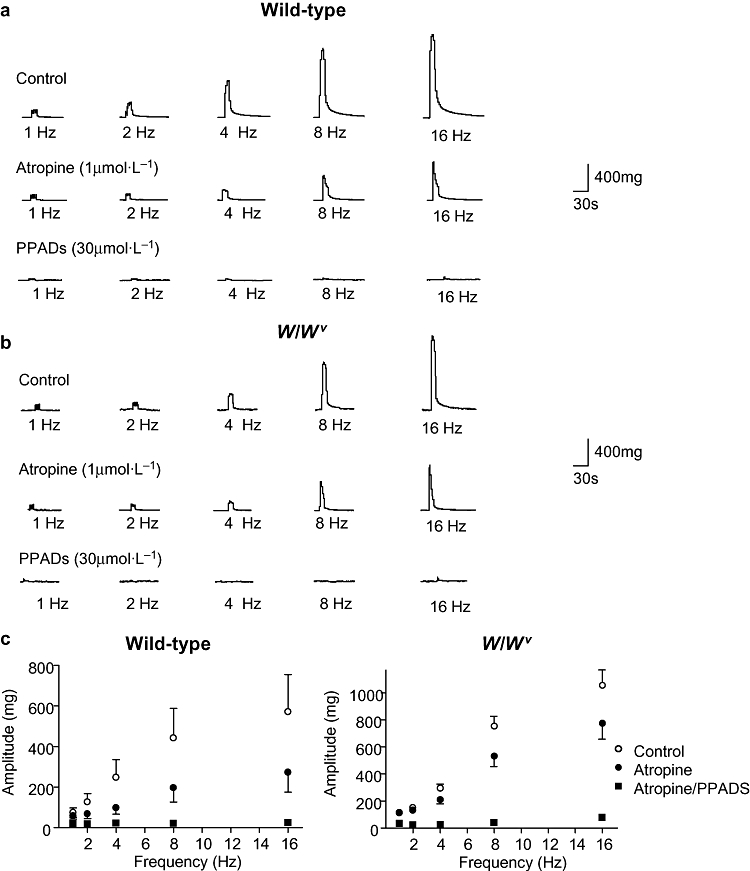Figure 4.

Cholinergic and purinergic components of neurogenic-evoked contractions. Detrusor strips from wild-type (a) and W/Wv (b) animals contracted in response to electrical field stimulation as before. In both tissue types, atropine (1 µmol·L−1) reduced the amplitude of the contractions with the remaining responses inhibited by pyridoxal-5-phosphate-6-azophenyl-2′,4′-disulphonic acid (PPADS) (30 µmol·L−1). Summary graphs (c) reveal that atropine blocked approximately 50% of the contraction in wild-type strips, whereas in W/Wv strips, atropine reduced the contractions by only about 25%. Contraction amplitude at 16 Hz in wild-type strips was 52% cholinergic and 48% purinergic (control 571 ± 185 mg reduced to 272 ± 97 mg in atropine and further reduced to 24 ± 8 mg by PPADS), whereas responses in W/Wv strips were comprised of 27% cholinergic and 73% purinergic components (control 1054 ± 115 mg, atropine 774 ± 115 mg and PPADS 76 ± 15 mg).
